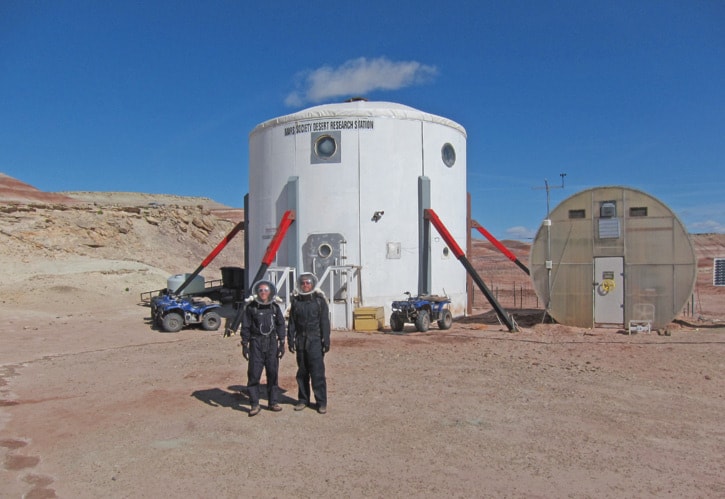Bechara Saab’s travel hopes are out of this world.
The neuroscientist is among the 200,000 people who applied to take a one-way trip to Mars in a settlement program that is expected to begin in 10 years.
The 34-year-old made the first cut and is now competing against 999 other people across the world.
“I want to get the ball rolling on a whole new society, a new way of doing things; something that can only be done when you’re far away from the institutions here,” he says. “I don’t think we’ll have a Utopia, but we could have a chance to get something right.”
Establishing human life on the red planet is the mission of Mars One, a not-for-profit foundation that maintains current technologies make life on Mars possible.
“I got a bit of backlash from the family, but once we discussed it more my siblings came on-board and Mom’s sort of onboard,” says Saab. “And Dad’s started to take it seriously.”
The enthusiastic scientist spent two weeks in March in a Mars habitat, known to rotating crews as “the hab.”
Run by the non-profit Mars Society, the Mars Desert Research Station is a laboratory for learning how to live and work on another planet.
“Essentially it’s individuals around the world who advocate the human exploration of Mars,” says Saab of his time as a member of Crew 138. “The terrain is very Mars-like – no buildings around, no roads, isolated, all the rock has a high iron content, the clay is red, the dust there is extremely fine. There is no water around, no vegetation, just little bits of cacti.”
The hab is a two-storey, 1,200 sq. ft. building with six sleeping cubicles, along with a kitchen/living area on the second floor. A laboratory, washroom and two airlocks occupy the bottom floor.
Outside there is a greenhouse and an observatory.
Teams of two or more sometimes go outside on extravehicular activities (EVAs), usually to hike or undertake repairs around the hab. Before leaving, they don simulated space suits before exiting through an airlock.
Saab’s work included setting up standardized EVAs that would burn calories in order to see if he could offset some of the deficits induced by strenuous activity.
Muscular and cognitive fatigue takes a toll on the body and one cannot simply sit down and have a cup of coffee in the middle of the field, says Saab, noting one option might be ingesting something prior to going out.
“Other people were doing work with NASA, studying the efficiency of EVAs. A geologist was examining the efficacy of satellite technology when exploring an unknown area, a member from Peru was examining electronic components outside in the desert and there was an exercise scientist from NASA doing logistical studies on exercising in a confined environment,” he says.
Health and Safety officer for Crew 138, Saab collected data frequently throughout the day on his glucose and ketone levels, measured his physical movement and wore a heart monitor around his chest that constantly measured his heart rhythms.
An iPad was used to play cognitive games and Saab monitored reaction times, spatial reference memory and performed other cognitive tasks.
“I had a computer for analyzing data and to score mental affect – basically how I feel,” he says. “I used the kind of tests given to people potentially depressive or suffering from a mood disorder.”
Saab, who “had a blast” at the research station, says that, if accepted on the Mars mission, he would take few possessions – his guitar, printed photos of family members, The Great Gatsby and music of all kinds.
But it’s not as if Saab will have nothing to fall back on if he doesn’t fulfill his dream of celebrating his 50th birthday on Mars.
The gifted young scientist, who defended his doctoral thesis on molecular genetics and neuroscience, has received a grant from the Swiss National Science Foundation to open a new lab, with a focus on exploring brain circuitry.
“It captured my imagination and I can now get in and find out which part of the brain and which neurotransmitters are involved in the desire to learn new things – curiosity,” he says. “One part of the lab will be focusing on why people with depression are less curious. Nobody has ever really looked at in controlling the circuitry, can you affect depression or other mental illnesses?”
